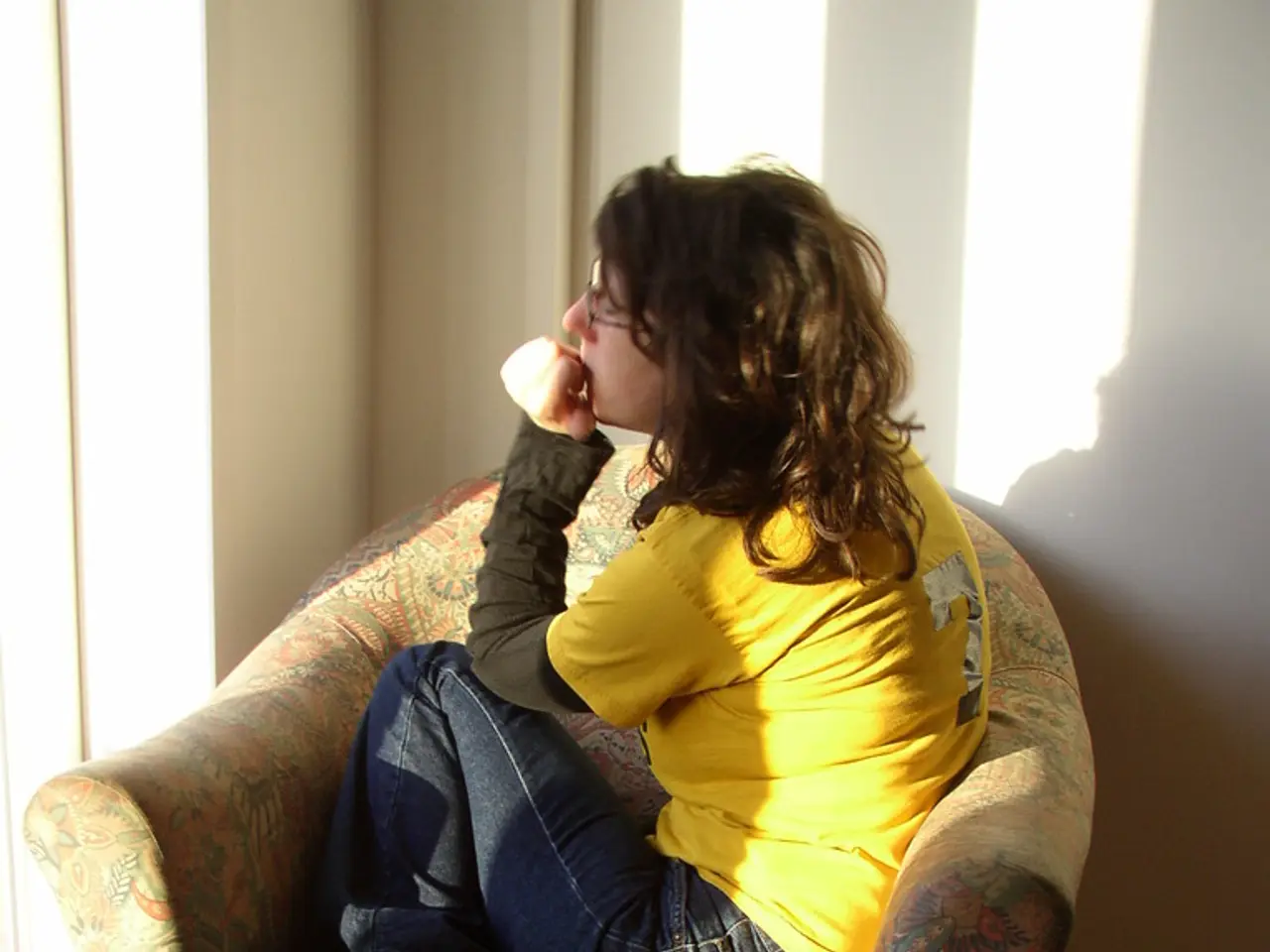Optimal Seating Positions for Easing Lower Back Aches and Other Relief Methods
In the quest to find relief from lower back pain, understanding the impact of our sitting positions and posture is crucial. According to various studies, maintaining a neutral spine, keeping hips and knees at a 90-degree angle, and ensuring feet are flat on the floor or on a footrest can significantly help alleviate lower back pain [1][2][3].
A well-supported sitting position is vital in reducing pressure on the spine, back muscles, and shoulders. Sitting with both feet flat on the ground and something to support the lower back is recommended as it helps distribute weight evenly and minimises strain [1][2][3].
However, certain sitting positions should be avoided. Slouching, rounding the back, sitting with legs crossed, leaning forward, or sitting without lumbar support can increase pressure on spinal structures and weaken supportive muscles, exacerbating pain [3][5]. Sitting cross-legged for extended periods can lead to sacroiliac joint instability, back pain due to increased pressure on the gluteus muscles, and pelvic misalignment [1].
Beyond posture correction, other treatment options for managing lower back pain include medication, physiotherapy, hot and cold therapy, injections, minimally invasive procedures, and in severe cases, surgical intervention [4].
Non-steroidal anti-inflammatory drugs (NSAIDs), muscle relaxants, or nerve pain drugs can help reduce pain and inflammation. Physiotherapy, tailored exercises, and manual therapy can strengthen core and back muscles, improve flexibility, and correct posture. Hot and cold therapy can relax tight muscles and reduce inflammation. Injections of corticosteroids can provide relief for nerve-related pain or inflammation [4].
Minimally invasive procedures such as nerve blocks or radiofrequency ablation can be used for persistent pain. Surgical interventions like disk replacement and spinal fusion are reserved for severe cases such as spinal fractures or significant nerve compression [4].
In addition to treatment, lifestyle measures can help alleviate or prevent lower back pain. Regular exercise, maintaining a moderate weight, developing or maintaining a supportive posture, and using the correct technique when exercising or lifting weights can all contribute to a healthier back [1].
It is essential to remember that if lower back pain persists for a few weeks with little to no relief from at-home treatment, seeking medical help is advisable. Additionally, individuals should consult a doctor if they experience numbness or tingling, weakness, changes in bladder or bowel function, or pain that prevents them from doing day-to-day activities [1].
In summary, the best relief for lower back pain involves ergonomic sitting with lumbar support, neutral spinal alignment, and frequent movement, complemented by medical and physical therapies tailored to the individual’s condition [1][2][3][4]. Regular exercise, maintaining a healthy weight, and a supportive posture can also significantly contribute to a healthier back.
References: [1] "Sitting positions for lower back pain: What's best?" Mayo Clinic. Retrieved from https://www.mayoclinic.org/diseases-conditions/lower-back-pain/in-depth/sitting/art-20048300 [2] "Sitting posture and lower back pain: Tips to improve your posture" Spine-health. Retrieved from https://www.spine-health.com/blog/sitting-posture-lower-back-pain-tips-improve-your-posture [3] "The impact of sitting on lower back pain: A systematic review" Journal of Back and Musculoskeletal Rehabilitation. Retrieved from https://www.ncbi.nlm.nih.gov/pmc/articles/PMC6346976/ [4] "Lower Back Pain: Diagnosis and Treatment" Johns Hopkins Medicine. Retrieved from https://www.hopkinsmedicine.org/health/conditions-and-diseases/lower-back-pain-diagnosis-and-treatment [5] "The Effects of Sitting with Legs Crossed on the Spine" Verywell Health. Retrieved from https://www.verywellhealth.com/effects-of-sitting-with-legs-crossed-on-the-spine-3116698
Anesthetics, often used during surgeries, can help manage acute pain, but are not typically applied to chronic back pain conditions. Science continues to advance in the field of painmanagement, with a focus on chronic-diseases such as chronic-kidney-disease and its impact on backpain. Workplace-wellness programs, incorporating health-and-wellness awareness and fitness-and-exercise, aim to prevent or reduce back pain by improving posture and physical condition. Mental-health is also increasingly recognized as a crucial component in chronic-pain management, with therapies-and-treatments such as cognitive-behavioral therapy proving beneficial. Nutrition plays a role too; a balanced diet can aid in maintaining a healthy weight and promote overall well-being, contributing to back health. CBD, a chemical compound found in cannabis, has shown potential in reducing chronic pain and inflammation. Therefore, a holistic approach, encompassing posture correction, medical treatments, lifestyle adjustments, and alternative therapies, offers the best approach to managing and alleviating lower back pain.




